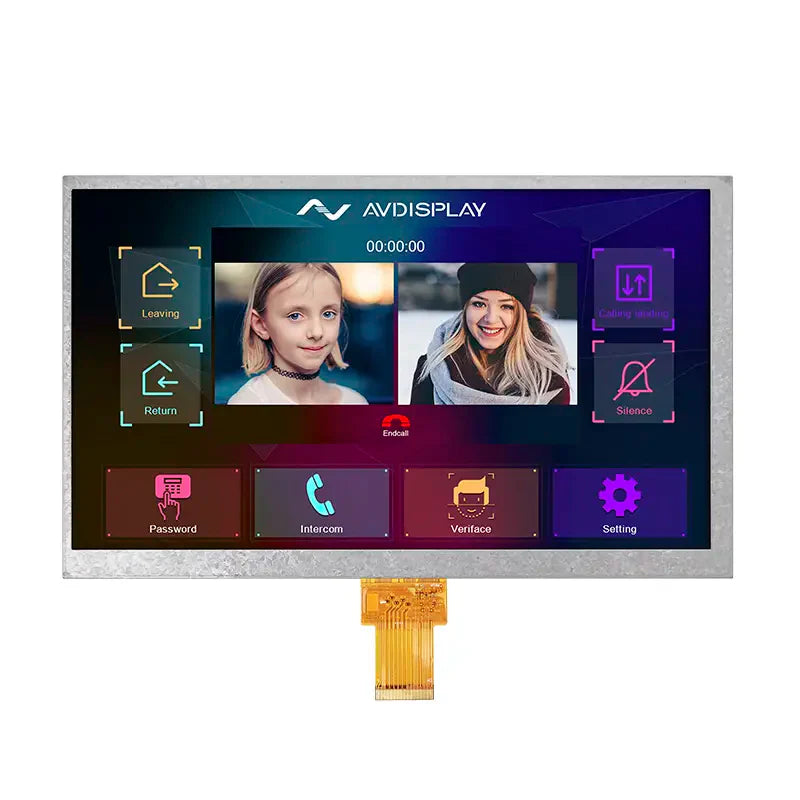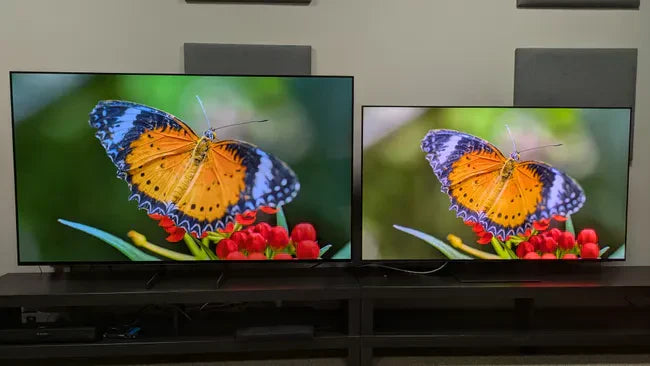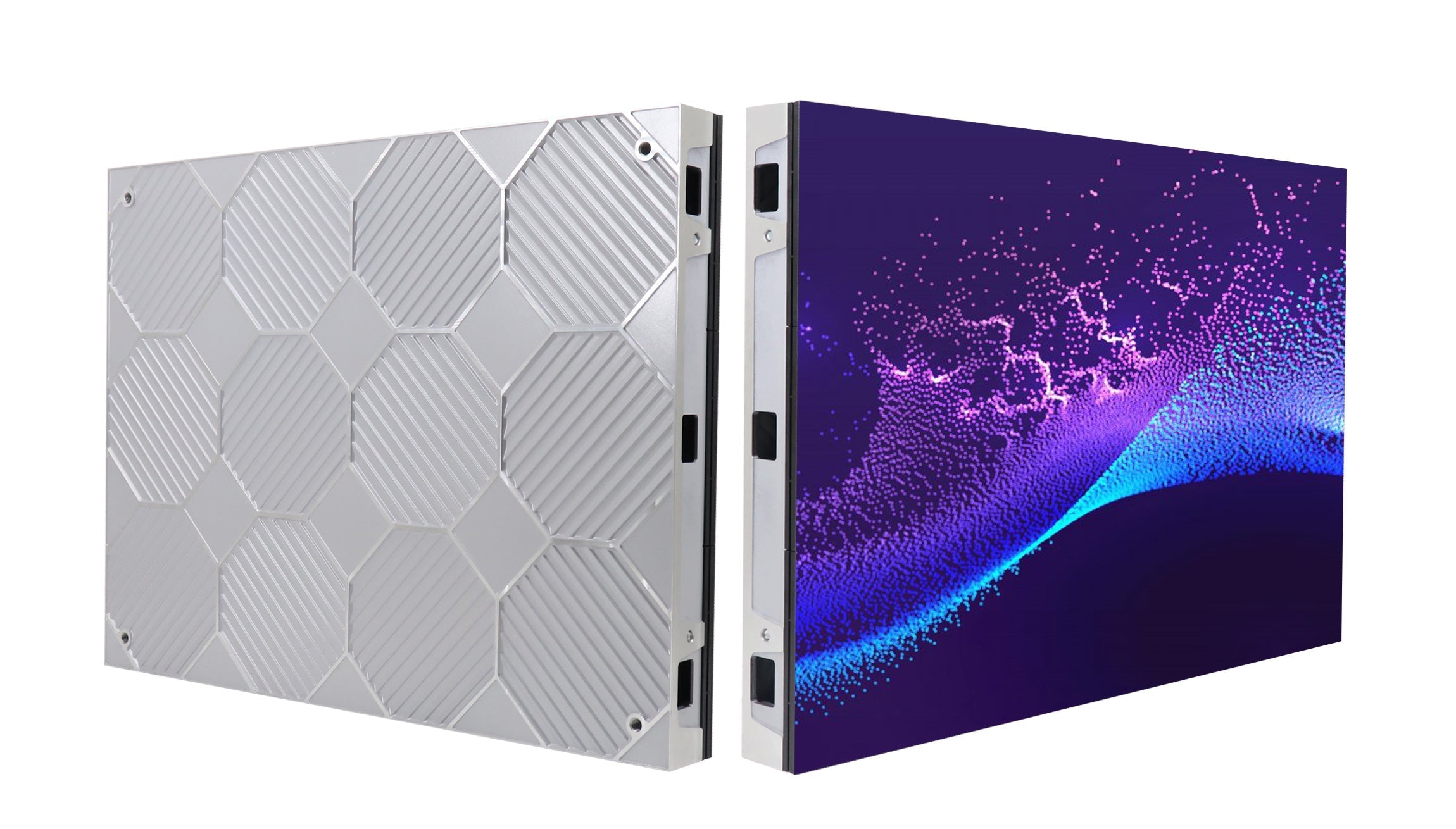A screen module, a self-contained display unit integrating components like LCD/LED panels, driver circuits, and sometimes touch sensors, typically measures 10-15 inches diagonally with a 1920x1080 FHD resolution.
Inside a Screen Module
At its core, a screen module isn’t just a “display”; it’s a layered sandwich of ~15-20 precision components. Take a mid-range smartphone screen module, for example: it’s roughly 140mm tall x 70mm wide x 0.7mm thick (about the size of a credit card), weighs ~18g, and crams in an LCD/LED panel, touch sensor, driver IC, backlight unit (BLU), and protective layers. That tiny stack delivers 1920x1080 FHD resolution (2 million pixels), 60Hz refresh rate (60 image updates per second), and 400 nits brightness (enough to see outdoors on a cloudy day).
For LCD modules, this is a ~0.5mm-thick glass substrate coated with red, green, and blue (RGB) liquid crystals. Behind it sits the BLU: a grid of 384 mini-LEDs (in premium models) or hundreds of standard LEDs, spaced ~0.8mm apart, diffused by a 0.3mm-thick optical film to eliminate hotspots. This setup pushes peak brightness to 1000 nits (for HDR content) and keeps contrast at 1000:1 .
Each pixel is a tiny organic diode that emits its own light, so a 6.7-inch OLED panel (common in phones) can hit 0 nits for true black and 1,500,000:1 contrast. Its thickness? Just ~0.3mm (2x thinner than LCDs), thanks to no backlight layer.
Most modules use capacitive touch: a 120x180 grid of transparent electrodes (ITO film) laminated to the panel. It detects finger placement in <10ms and supports 10-point multi-touch.
A mid-tier driver processes 24 million pixels per second (for FHD) at 60Hz, while high-end chips (for 4K/120Hz TVs) manage 1 billion pixels/sec, reducing input lag to <8ms.
LCD vs. OLED Module Specs: By the Numbers
|
Component |
LCD Screen Module |
OLED Screen Module |
|---|---|---|
|
Thickness |
~0.7mm (with BLU) |
~0.3mm (no BLU) |
|
Contrast Ratio |
1000:1 |
1,500,000:1 |
|
Black Level |
~0.05 nits (grayish) |
0 nits (true black) |
|
Power Consumption |
Higher (BLU always on) |
Lower (pixels off = no power) |
|
Typical Brightness |
400-1000 nits |
500-1500 nits |
Why does this matter? Thinner OLEDs fit in sleek watches; LCDs cost ~30% less for large TVs. 120Hz panels (common now) reduce motion blur by ~40% vs. 60Hz.
Screen Modules at Home & Work
Screen modules are woven into the fabric of your day,they’re the 65-inch TV you stream movies on, or the 14-inch laptop you take to your kitchen table for work; at the office, they’re the 27-inch monitor for spreadsheet marathons, or the 10-inch rugged panel controlling factory robots. Globally, ~85% of households own at least one smart screen module (TV, tablet, or laptop), and businesses spend $120 billion annually on commercial display modules.
Take a mid-range 65-inch 4K smart TV: its module crams 8.3 million pixels (4x Full HD) and a 120Hz refresh rate slashing motion blur by ~30% for sports or action films. It hits 500 nits brightness (perfect for living rooms) and supports HDR10+, which expands color range by ~30% vs. standard HDR. its Wi-Fi module uses 802.11ac (1.3Gbps bandwidth) to load Netflix in <2 seconds. Even your laptop’s screen matters: a 14-inch FHD module with 300 nits brightness uses ~15% less power than a 400-nit one, adding an extra hour of battery life for Zoom calls or Netflix.
Work shifts the focus to productivity. Your office 27-inch monitor’s module boasts 99% sRGB color gamut. It also emits ~40% less blue light than basic modules, cutting eye strain by that same margin over 8-hour days. These modules last ~50,000 hours (over 5 years of daily 8-hour use) and cost 500. For remote workers, 2-in-1 laptops with 10-point multi-touch screens let you zoom into Google Docs or sign PDFs in half the time reducing document editing tasks by ~20% vs. relying solely on a mouse.
Industrial control panels use IP65-rated (dust/water-resistant) modules that work in -20°C to 60°C. They have 1024x768 resolution (clear enough for machine operation schemas) and 500 nits brightness (visible in direct sunlight). These modules last ~10 years—key for machinery that runs 24/7, since downtime costs factories an average of $10,000 per hour in lost production. And for logistics, handheld scanners with 1D/2D barcode screen modules read labels in <0.1 seconds speeding up inventory checks by ~50% vs. manual entry.
~30% quicker than 60Hz. For your boss, industrial modules with 10-year lifespans cut costly downtime saving $120,000/year for a plant with 100 control panels.
Sizes & Clarity of Screen Modules
Screen modules come in sizes that slot perfectly into your life—from the 1.3-inch square on your Apple Watch (glancing at texts) to the 85-inch behemoth on your living room wall (binge-watching Stranger Things). Clarity matters just as much: a 6.7-inch phone like the Samsung Galaxy S24 has a FHD+ (2400x1080) panel with 410 PPI. Even budget laptops now skip blurry screens: a $400 Chromebook with a 14-inch, 1920x1080 module hits 141 PPI.
The link between size and clarity starts with pixel density (PPI), which measures how many pixels squeeze into one inch of screen. For phones, >400 PPI is the sweet spot. Take the iPhone 15: its 6.1-inch Super Retina XDR module uses a 2556x1179 resolution to hit 460 PPI. Compare that to a $150 Android phone with a 6.5-inch, 1920x1080 screen (328 PPI).Why does this matter? Higher PPI reduces eye strain when you scroll social media or read ebooks for hours—studies show >300 PPI cuts fatigue by ~15% vs. lower densities.
An iPad Pro 12.9-inch uses a Liquid Retina XDR module with 2732x2048 resolution (264 PPI). That PPI isn’t as high as a phone, but the 12.9-inch screen gives you space to draw with Apple Pencil (precision down to 0.1mm) or read PDFs without zooming. Even better: its 1000 nits brightness makes sketches or photos look vivid, while ProMotion (120Hz) reduces lag when you’re sketching.
Laptops flip the script: A 13-inch MacBook Air with a 2560x1600 Retina screen (227 PPI) is perfect for writing code or watching Netflix. But a 17-inch gaming laptop? It needs 3840x2160 (4K) resolution (250 PPI) to avoid graininess when playing Cyberpunk 2077. Gamers care about more than PPI: a 240Hz refresh rate (vs. 60Hz) cuts motion blur by ~75%, so you see enemies first in fast-paced games. That’s why Razer’s Blade 17 has a 240Hz, 4K OLED module.
A 55-inch 4K TV has a 68 PPI just above the “clear enough” threshold (most people notice blur below 50 PPI). But an 85-inch 4K? Its 34 PPI will make faces look pixelated in close-ups. That’s why premium TVs like Sony’s XR-85X95L offer 8K resolution (68 PPI on 85-inch)—same PPI as 55-inch 4K, but way more detail in movies or sports. And brightness matters too: a 1000-nit TV (vs. 400-nit) makes HDR scenes pop.
Industrial screens take size/clarity to extremes. Warehouse barcode scanners use 7-inch, 1280x800 modules (216 PPI). Factory control panels? They’re 15-inch, 1920x1080 (141 PPI) with IP65 rating dustproof, waterproof, and visible in direct sunlight (1000 nits). These modules last ~10 years because a blurry or broken screen in a factory means $10,000/hour in downtime.
A fitness tracker needs a 1.3-inch, 326 PPI screen (clear enough for steps, small enough to wear). A graphic designer needs a 15-inch, 250 PPI laptop (space for canvases, sharp enough for pixel-perfect edits). A movie buff needs a 65-inch, 4K TV (68 PPI) with 120Hz refresh rate (smooth action, vivid colors).
|
Device Type |
Common Size (Inches) |
Resolution |
PPI |
Key Clarity/Size Perk |
|---|---|---|---|---|
|
Smartwatch |
1.2-1.5 |
390x390 |
326 |
Fits wrist, sharp for glances |
|
Smartphone |
6.1-6.8 |
2400x1080 (FHD+) |
400-500 |
Pocketable, no pixel visibility |
|
Tablet |
10-12.9 |
2560x1600 (QHD+) |
280-340 |
Space to draw/read, precise input |
|
Laptop |
13-17 |
1920x1080 (FHD)/3840x2160 (4K) |
140-250 |
Portable vs. immersive work |
|
TV |
55-85 |
3840x2160 (4K)/7680x4320 (8K) |
34-102 |
Immersive movies, no blur |
|
Industrial Scanner |
6-8 |
1280x800 |
200-216 |
Big for scanning, sharp for barcodes |
How Screen Modules Make Images
Take your 6.7-inch phone: its module refreshes 60 times per second (60Hz), updating 2 million pixels (1080p) every frame to play a YouTube video—lag-free because the driver IC crunches 24 million pixels/sec to keep up.
LCD modules build images layer by layer, starting with the backlight unit (BLU): a grid of 384 mini-LEDs (in premium models) or hundreds of standard LEDs, spaced 0.8mm apart, shining through a 0.3mm-thick optical film that diffuses light to kill hotspots. This pushes peak brightness to 1000 nits (perfect for HDR movies) and keeps colors consistent across the screen. A 1080p LCD has 2 million pixels (3 subpixels each), and the driver IC sends voltage to each one 60 times/sec, which is why gamers prefer 120Hz or 144Hz modules (cutting motion blur by ~40%). Contrast? LCDs max out at 1000:1.
LCD modules: Use a backlight (384 mini-LEDs or more) + liquid crystals to shape light. Critical specs? 1000 nits brightness (keeps work docs vibrant) and 1000:1 contrast (consistent colors for spreadsheets).
OLED modules flip the script: no BLU, just self-emissive pixels. Each organic diode in a 6.7-inch Galaxy S24 panel emits its own red, green, or blue light when electrified—so 0 nits for true black (think: midnight sky on Netflix) and a 1,500,000:1 contrast ratio (colors pop because there’s no backlight bleeding). The panel is 0.3mm thick (half an LCD) and uses 19 million pixels (FHD+). And it’s faster: OLED pixels switch states in <1ms—vs. LCD’s 10ms so gaming feels snappier (input lag drops to <5ms for high-end OLEDs).
OLED modules: Rely on self-lighting pixels (no backlight). Critical specs? 0 nits black (true-to-life dark scenes) and 1.5M:1 contrast (vivid movie colors).
A budget laptop IC might handle 12 million pixels/sec (for 720p 60Hz), but a 4K 120Hz TV needs one that processes 1 billion pixels/sec. Why? To avoid “ghosting” (fuzzy trails behind moving objects) and keep colors accurate. And for eye comfort? High-end modules use low-blue-light panels—cutting harmful blue wavelengths by 40% (per EPA guidelines), which reduces eye strain by ~30% over 8-hour workdays.
Driver ICs: Process 12M–1B pixels/sec depending on the device. Critical spec? <5ms lag (for gaming TVs) or <10ms (laptops). Real-world perk: High-end ICs cut color errors to <0.01%.
Real-world impact? A 144Hz gaming monitor with a fast OLED panel lets you react 30% quicker to in-game threats than a 60Hz LCD. A 4K TV with HDR10+ expands color range by 30%: Mavericklook like real fire, not washed-out pixels. Even your smartwatch’s 1.3-inch 326 PPI screen matters: higher pixel density means text looks sharp, not fuzzy, when you glance at texts—users report ~20% faster reading on high-PPI vs. low-PPI watches.
Screen Modules in Smartphones
Take the Samsung Galaxy S24 Ultra: its 6.8-inch Dynamic AMOLED 3 module packs 3088x1440 resolution (501 PPI)—pixels so tiny (smaller than a human hair, ~55 microns) you’ll never spot them—and a 1750Hz touch sampling rate that reads your finger’s movement beforeyou finish swiping. It hits 2600 nits peak brightness (enough to see your screen on a sunny beach) and uses OLED, so blacks are true(0 nits) instead of gray like LCDs. And here’s the best part: this module contributes just ~18% to the phone’s 5000mAh battery capacity.
Almost 9 out of 10 premium smartphones ($800+) use OLED modules now, and for good reason: they’re ~50% thinner than LCDs (no bulky backlight) and support higher refresh rates (120Hz+ vs. 60Hz on budget LCDs). That thinness lets phones like the iPhone 15 Pro be just 8.3mm thick. But OLED isn’t flawless: modern modules have anti-burn-in tech that reduces static image retention (like a stuck Instagram logo) to <1% after 2 years—up from ~5% a decade ago. And while they cost ~20% more than LCDs, users say the vivid colors and true blacks are worth it—85% of OLED owners stick with OLED for their next phone.
A 6.7-inch phone with 410 PPI (like the Pixel 8 Pro) means text looks like it’s printed on paper. Drop to 326 PPI (budget phones with 6.5-inch screens), and you’ll see pixelation when you crop a photo or read small font sizes. Studies from the DisplayMate Lab confirm: >400 PPI cuts eye strain by ~15% during 2-hour scrolling sessions. And for designers? A 500+ PPI screen (like the iPhone 15 Pro Max’s 460 PPI) lets them edit photos accuratelycolors match their desktop monitors 95% of the time, vs. 80% on lower-PPI screens.
A 120Hz module (standard on flagships now) updates the screen 120 times per second—vs. 60Hz. Gamers love this: a 120Hz module cuts input lag by ~40% vs. 60Hz, so you react 0.1 seconds faster to a Genshin Impactenemy attack. But there’s a tradeoff: 120Hz uses ~20% more battery than 60Hz.
The Galaxy S24 Ultra’s module has a 1750Hz sampling rate—it checks where your finger is 1750 times per second. Budget phones (like the Nokia G42) have 60Hz sampling. And for foldables? The Samsung Galaxy Z Fold5’s inner module has a 240Hz sampling rate—critical for drawing or typing on a 7.6-inch screen without missing a stroke.
Premium screens use Gorilla Glass Victus 3 ,it survives 1.8m drops onto concrete 85% of the time (vs. 70% for older Gorilla Glass). And the module’s surface has a 9H hardness rating—harder than steel (4-5H). Water resistance? Most modules are sealed with IP68 ratings—they can sit in 1.5m of water for 30 minutes without damage.
Choosing a smartphone? Focus on three numbers:
-
PPI: Aim for >400 for sharp text/photos.
-
Refresh Rate: 120Hz for smooth scrolling/gaming.
-
Brightness: >1000 nits for outdoor use.
|
Phone Model |
Screen Size (Inches) |
Resolution |
PPI |
Refresh Rate |
Brightness (Nits) |
Battery Impact (%) |
Key Perk |
|---|---|---|---|---|---|---|---|
|
iPhone 15 Pro |
6.1 |
2556x1179 (OLED) |
460 |
120Hz |
2000 |
15 |
ProMotion for buttery-smooth scrolling |
|
Samsung Galaxy S24 |
6.7 |
3088x1440 (OLED) |
501 |
120Hz |
2600 |
18 |
Highest PPI in class for sharpness |
|
Google Pixel 8 Pro |
6.7 |
2992x1344 (OLED) |
424 |
120Hz |
2400 |
16 |
Best color accuracy for photographers |
|
OnePlus Nord N300 |
6.7 |
2400x1080 (LCD) |
395 |
90Hz |
800 |
10 |
Budget-friendly with decent brightness |
A 2600-nit brightness spec means you can use your phone at the park without squinting. A 1750Hz touch sampling rate means typing feels instant.
Read more

A TFT display module, short for TFT transistor, is a compact screen component that uses active-matrix technology , in which each pixel has its own transistor, improving instrument timing; typical m...

Choosing between OLED and DLED depends on needs: OLED delivers true blacks (infinite contrast ratio) with pixel-level dimming for rich colors, great for dark rooms, while DLED (LED-backlit LCD) hit...




Leave a comment
This site is protected by hCaptcha and the hCaptcha Privacy Policy and Terms of Service apply.